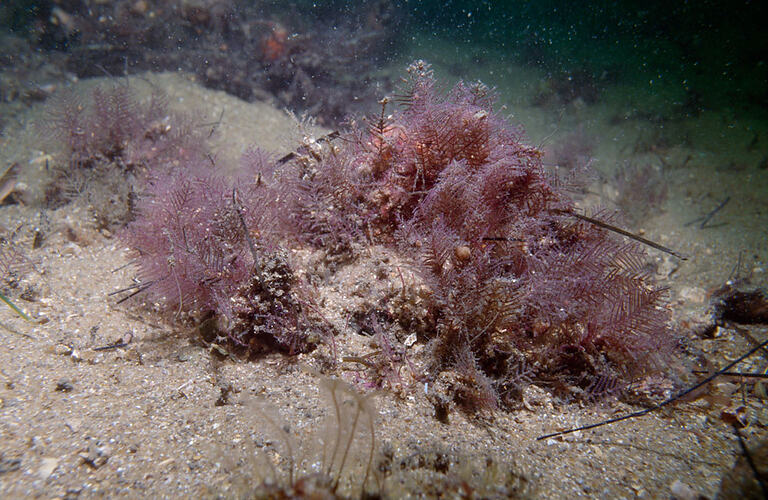General Description
Colony of individual polyps (hydranths) joined by root-like network of tubular stolons at the base. Colony shape is feather-like (pinnate). Colour: purple. Up to 5 cm high.
Biology
Colonies may grow over several years and are fertile in summer. They are common in tidal channels in Port Phillip and Western Port Bays.
Distribution
Indian Ocean and Australia (reported from Northern Territory and Victoria).
Habitat
Subtidal, epiphytic on algae and epizoic on benthic invertebrates in areas with good current flow
More Information
-
Animal Type
-
Animal SubType
-
Brief Id
Bushy purple colonies on open seabed.
-
Maximum Size
5 cm
-
Habitats
-
Diet
Plankton or Particles
-
Diet Categories
Plankton
-
Hazards
Generally not harmful but still able to sting bare skin.
-
Endemicity
-
Commercial
No
-
Conservation Statuses
DSE Advisory List: Not listed, EPBC Act 1999: Not listed, IUCN Red List: Not listed
-
Depths
Shallow (1-30 m)
-
Water Column Locations
On or near seafloor
-
Taxon Name
-
Scientific Author
(Busk, 1852)
-
Common Name
Hydroid
-
Phylum
-
Class
-
Subclass
-
Order
-
Family
-
Genus
-
Species Name
patulum



